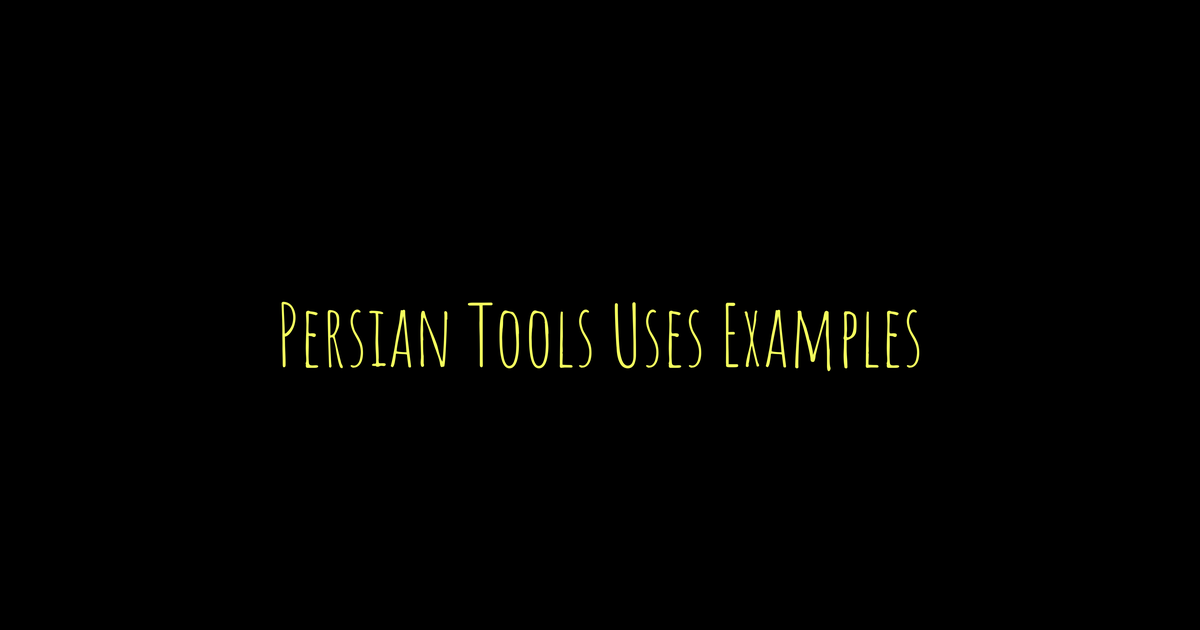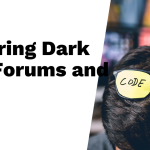Persian tools are mainly software designed to handle the unique aspects of the Persian language, such as its right-to-left script and complex grammar. Most focus on natural language processing (NLP) tasks like tokenization, parsing, and named entity recognition. A notable example is DadmaTools by Dadmatech Co., which offers a wide range of features including text normalization, lemmatization, POS tagging, and sentiment analysis. It supports many datasets for training models and provides pre-trained word embeddings like GloVe and FastText. These tools find use in areas like healthcare, education, social media analysis, and search engines. Overall, they help bridge Persian language technology gaps for research and practical uses.
Table of Contents
- Overview of Persian NLP Tools and Their Features
- DadmaTools: A Complete Persian NLP Toolkit
- Supported Datasets for Persian Language Processing
- Pre-trained Persian Word Embeddings and Uses
- Evaluating Performance of Persian NLP Tools
- Other Notable Persian NLP Resources
- Applications of Persian Tools Across Industries
- Practical Code Examples Using DadmaTools
- Frequently Asked Questions
Overview of Persian NLP Tools and Their Features
Persian NLP tools tackle specific challenges arising from the language’s right-to-left script, rich verb morphology, and the Ezafe grammatical construction that links words in phrases. Core functionalities typically include tokenization, lemmatization, part-of-speech tagging, parsing, named entity recognition, and sentiment analysis, enabling detailed linguistic analysis. Since Persian text often contains various character forms, irregular punctuation, and spacing issues, effective tools incorporate text normalization to standardize input before processing. Advanced systems also handle informal language and dialectal variations, which are common in social media and conversational Persian, improving robustness across diverse text sources. Many Persian NLP toolkits offer modular pipelines that chain these tasks efficiently, facilitating streamlined workflows for developers and researchers. Integration with extensive Persian corpora boosts training quality and model accuracy, while some tools provide spell checkers adapted specifically to Persian orthography rules. Support for both classical and modern Persian allows applications to cover a wide range of registers, from literary texts to everyday communication. Accessibility is enhanced through APIs and Python libraries, making these tools practical for integration into various applications. To ensure reliability, evaluation benchmarks and standard datasets are used widely to measure the performance of Persian NLP components, guiding continuous improvements and comparisons among toolkits.
- Persian NLP tools address unique challenges due to Persian’s right-to-left script, complex verb morphology, and Ezafe construction.
- Core tasks supported by Persian NLP tools include tokenization, lemmatization, part-of-speech tagging, parsing, named entity recognition, and sentiment analysis.
- These tools often include text normalization to handle character variants, punctuation, and spacing common in Persian text.
- Handling informal Persian text and dialectal variations is a common feature in advanced tools.
- Many Persian NLP tools support pipelines that chain several processing steps for efficient workflow.
- Integration with large Persian corpora enables better model training and evaluation.
- Some tools provide spell checking tailored to Persian orthographic rules.
- Support for both classical and modern Persian text is sometimes included, addressing different language registers.
- Various tools offer APIs or Python libraries for easy incorporation into applications.
- Evaluation benchmarks and standard datasets help measure the quality of Persian NLP tool outputs.
DadmaTools: A Complete Persian NLP Toolkit
DadmaTools is a versatile and comprehensive Persian NLP toolkit designed to handle the unique linguistic aspects of the Persian language. It offers modular components that include text normalization, tokenization, and lemmatization, all tailored to Persian grammar and morphology. Its POS tagger stands out by providing both universal and language-specific tags with high accuracy, helping to properly label parts of speech in Persian text. The toolkit also includes dependency and constituency parsers, which analyze sentence structures to reveal grammatical relationships and phrase boundaries, essential for deeper syntactic understanding.
Named Entity Recognition within DadmaTools identifies key entities such as persons, locations, and organizations, enabling more meaningful information extraction from texts. The built-in spellchecker detects common Persian spelling mistakes and suggests context-aware corrections, improving text quality. One unique feature is Kasreh Ezafe detection, which marks the Persian grammatical link connecting nouns to adjectives or possessives, a construct critical to accurate parsing.
DadmaTools also supports informal to formal text conversion, allowing the transformation of colloquial Persian expressions into their standard, formal equivalents. Chunking groups tokens into meaningful phrases, simplifying tasks like parsing and information extraction downstream. Its sentiment analysis module uses pretrained models on Persian datasets to classify text polarity, which can be valuable for opinion mining and social media analysis.
A key strength of DadmaTools is the flexibility it offers users to customize processing pipelines by enabling or disabling specific components based on application needs. This modular design makes it suitable for a wide range of tasks, from simple tokenization to complex syntactic analysis, accommodating various research and industrial applications involving Persian text.
| Component | Description |
|---|---|
| Text Normalization | Cleaning and unifying text characters, removing extra spaces, punctuation adjustments, and replacing sensitive data with placeholders. |
| Tokenizer | Splits Persian text into tokens (words or meaningful units). |
| Lemmatizer | Reduces words to their base or dictionary form, handling Persian morphology. |
| Part of Speech (POS) Tagging | Assigns grammatical categories such as noun, verb, adjective, etc. to each token. |
| Dependency Parsing | Analyzes grammatical structure by defining relationships between words (subject, object, modifiers). |
| Constituency Parsing | Breaks sentences into sub-phrases or constituents. |
| Named Entity Recognition (NER) | Identifies entities like people, locations, organizations within Persian text. |
| Spellchecker | Detects and corrects spelling errors based on context. |
| Kasreh Ezafe Detection | Identifies the grammatical link between nouns and adjectives or possessives. |
| Informal to Formal Conversion | Transforms informal Persian text to formal style. |
| Chunking | Groups words into chunks such as noun or verb phrases for downstream tasks. |
| Sentiment Analysis | Determines sentiment polarity (positive/negative) using pretrained models. |
Supported Datasets for Persian Language Processing
A variety of datasets have been developed to support Persian language processing tasks, addressing the unique linguistic characteristics of Persian. PersianNER is a key resource containing annotated texts for training and evaluating named entity recognition (NER) models, enabling identification of people, places, and organizations in Persian text. Alongside it, ARMAN and Peyma datasets offer diverse examples not only for entity recognition but also for general NLP tasks, enriching model robustness. FarsTail serves as a benchmark dataset designed for textual entailment, helping measure a model’s ability to infer relationships between sentences in Persian. For spellchecking, FaSpell provides a useful collection of commonly misspelled Persian words paired with their corrections, which is essential for developing accurate spellcheckers. PersianNews is a labeled dataset categorizing news articles, widely used for text classification tasks to sort Persian news into relevant topics. On the syntactic front, PerUDT, the Persian Universal Dependency Treebank, supports both part-of-speech tagging and dependency parsing, giving models structured insights into Persian grammar. For text summarization research, PnSummary contains Persian news summaries, making it practical for training summarization algorithms. Sentiment analysis benefits from datasets like SnappfoodSentiment, which includes user reviews tagged with sentiment polarity, helping models understand positive and negative expressions in Persian. Machine translation and cross-lingual research rely on the TEP dataset, which aligns English and Persian sentences for effective bilingual training. In addition to these annotated datasets, large raw corpora such as WikipediaCorpus and PersianTweets provide extensive Persian text, crucial for language modeling and pre-training tasks. Together, these resources create a comprehensive foundation for advancing Persian NLP applications across multiple domains.
Pre-trained Persian Word Embeddings and Uses
Pre-trained Persian word embeddings are essential for representing Persian words as dense vectors that capture semantic and syntactic meanings. DadmaTools supports several popular embeddings, including GloVe trained on Persian Wikipedia and web texts, which provide strong semantic representations useful for many NLP tasks. FastText embeddings are particularly valuable for Persian due to their ability to capture subword information, helping to manage Persian’s rich morphology and rare or out-of-vocabulary words effectively. Word2Vec embeddings trained on the Persian CoNLL17 corpus offer contextual word vectors suited for tasks like parsing and named entity recognition. These embeddings enable finding semantically similar words by computing cosine similarity between their vectors, which can assist in synonym detection, query expansion, and semantic search. By averaging or combining word vectors, entire sentences or documents can be represented, serving as input features for classification, clustering, or information retrieval models. Using pre-trained embeddings reduces reliance on large labeled datasets, speeding up supervised learning and improving model performance by encoding linguistic properties native to Persian. DadmaTools provides easy access to load and apply these embeddings through its APIs, making it straightforward for developers to integrate them into their pipelines. When specific domains require it, users can also train custom embeddings on domain-specific Persian texts to better capture specialized vocabulary and nuances.
Evaluating Performance of Persian NLP Tools
Evaluating Persian NLP tools involves measuring their accuracy and effectiveness across various language tasks using standard metrics like precision, recall, F1 score, and accuracy. DadmaTools, for example, achieves a high POS tagging performance with an F1 score around 97.5% on standard Persian datasets, reflecting its strong ability to correctly identify grammatical categories. Its lemmatization module is even more accurate, exceeding 99%, effectively managing the complex morphology of Persian verbs and nouns. Dependency parsing results show labeled attachment scores that are competitive with other leading tools, indicating reliable identification of syntactic relationships between words. In constituency parsing, DadmaTools surpasses some Stanford models by reaching over 82% F1 score, especially when preprocessing techniques are applied. Spellchecking accuracy is evaluated using datasets such as FaSpell, where precision and recall metrics help assess error detection and correction quality. Named Entity Recognition models trained on PersianNER and ARMAN datasets demonstrate robust entity detection across people, locations, and organizations. Sentiment analysis modules are validated using datasets like SnappfoodSentiment, showing reliable classification of positive and negative sentiments in Persian text. Comparative evaluations also include other popular toolkits such as Stanza, Hazm, ParsiPy, and Parsivar, providing a comprehensive performance landscape. Continuous updates and the expansion of datasets contribute to ongoing improvements in model accuracy and robustness, helping Persian NLP tools to keep pace with evolving language use and application demands.
Other Notable Persian NLP Resources
Beyond widely known toolkits like DadmaTools, several other Persian NLP resources contribute significantly to processing and analyzing the Persian language. The ParsiPy toolkit specializes in historical Persian texts and offers tokenization, lemmatization, and POS tagging tailored to older linguistic forms. Similarly, ParsiPardaz and Parsivar provide robust preprocessing utilities including normalization, tokenization, and POS tagging, useful for modern Persian text processing. The Naab Corpus stands out as a publicly available large-scale Persian text corpus, supporting a wide range of NLP research tasks. Many Persian datasets and models are also openly accessible through GitHub repositories, enabling researchers and developers to explore, adapt, and build upon existing work under open-source licenses. Additionally, Persian language models and parsers have been integrated into popular NLP frameworks, making it easier to incorporate Persian-specific analysis into broader pipelines. Community-driven efforts play a crucial role in expanding annotated corpora and improving existing tools, which helps sustain ongoing advancements in Persian NLP. Complementing text-based resources, tools for Persian speech recognition and synthesis are emerging, broadening the scope to spoken language applications. Libraries supporting Persian text embeddings and transformer models are becoming increasingly available, empowering semantic understanding and contextual representation for Persian text. These combined resources facilitate diverse applications ranging from academic research to industry solutions, offering a growing ecosystem for Persian language technology development.
Applications of Persian Tools Across Industries
Persian language tools, especially those in natural language processing, have found practical use across many industries. In healthcare, Persian NLP helps extract clinical information from patient records and analyze communication to improve patient care. Educational platforms use grammar correction and vocabulary tools to support Persian language learners, making study more interactive and accurate. Government bodies and news agencies rely on automated text classification, summarization, and named entity recognition to efficiently manage large volumes of Persian documents and news content. Social media monitoring leverages sentiment analysis and topic detection to understand public opinion in Persian tweets and reviews, aiding brand reputation and crisis management. Search engines enhance Persian query processing and result ranking, improving user experience for Persian speakers. Chatbots and virtual assistants use Persian understanding modules to provide smoother, more natural conversational interactions. E-commerce websites analyze customer feedback and reviews in Persian to gain insights into consumer sentiment and product perception. The legal sector benefits from Persian parsing and information extraction to streamline document review and case management. Cultural heritage projects apply Persian text analysis to digitize and annotate ancient manuscripts, preserving historical knowledge. Marketing and advertising teams utilize Persian NLP to create targeted content and extract consumer insights, optimizing campaigns for Persian-speaking audiences.
Practical Code Examples Using DadmaTools
DadmaTools offers a practical and straightforward API to handle various Persian NLP tasks efficiently. For normalization, the Normalizer class cleans text by fixing spacing issues and removing unwanted characters, making raw Persian input ready for analysis. For example, you can normalize a sentence with just a few lines of code to standardize punctuation and spacing. The toolkit also supports building NLP pipelines where tokenization, lemmatization, and part-of-speech tagging are chained together seamlessly. This allows processing Persian text in a single call, improving workflow simplicity and speed.
Loading datasets like PersianNER is equally accessible, enabling users to iterate over example sentences for training or evaluation purposes. Spellchecking is another useful feature, letting you detect misspelled words and suggest corrections through easy function calls. Named Entity Recognition (NER) uses pretrained models to identify people, places, and organizations in Persian sentences, which is vital for many information extraction applications.
Dependency parsing helps uncover syntactic relations between words, showing how sentences are structured grammatically. This can be combined with chunking to group related tokens into phrases, such as noun or verb chunks, supporting higher-level text analysis. Sentiment analysis is implemented with a simple function that classifies the polarity of Persian sentences, useful for social media or customer feedback analysis.
DadmaTools also includes informal to formal text conversion, which transforms casual Persian expressions into their standard forms, making content more suitable for formal contexts. Users can customize their NLP pipelines by specifying components as strings or configuration objects, tailoring processing sequences to their specific needs. These flexible, ready-to-use features make DadmaTools a solid choice for anyone working with Persian language processing.
Frequently Asked Questions
1. What are Persian tools commonly used for in traditional crafts?
Persian tools are often used for precision work in crafts like calligraphy, metalwork, and carpet weaving. These tools help artisans create detailed designs and maintain traditional techniques that have been passed down through generations.
2. How do Persian tools differ from other regional tools in terms of design and function?
Persian tools usually have distinct designs tailored to specific crafts, featuring ergonomic shapes and intricate details. They focus on fine control and durability, setting them apart from tools in other regions that might prioritize mass production or different materials.
3. Can you give examples of specific Persian tools and their applications?
Examples include the “Kohl stick,” used for applying traditional eye makeup, and the “Saz brush,” used in miniature painting. The “Carpet weaving knife” is essential for cutting threads precisely, while metal engraving tools help create decorative patterns on jewelry or utensils.
4. What role do Persian tools play in preserving cultural heritage?
These tools are key to maintaining traditional Persian art forms and craftsmanship. By using original tools, artisans continue techniques that reflect Persian history and identity, ensuring these skills and styles persist in modern times.
5. Are Persian tools still used in modern applications, or are they mostly for traditional purposes?
While many Persian tools maintain their traditional uses, some have adapted to modern techniques in art and design. Contemporary artists and craftsmen often incorporate these tools to blend classic methods with new styles, keeping them relevant today.
TL;DR Persian NLP tools play a crucial role in processing the Persian language, which has unique linguistic features. DadmaTools stands out as a comprehensive and open-source Persian NLP toolkit offering functions like text normalization, tokenization, lemmatization, POS tagging, parsing, named entity recognition, spellchecking, and sentiment analysis. Supported by diverse datasets and pre-trained word embeddings, these tools enable effective language processing across industries including healthcare, education, media, and social media analysis. DadmaTools delivers strong performance metrics and flexible pipelines, making it a valuable resource for both research and practical applications in Persian language technology.





